




Hierarchy of Safe System Interventions
From World Bank Good Practice Note on Road Safety (Based on Austroads Safe System Assessment Framework, report AP-R509-16 with additions.)
Supporting Interventions
Area of Concern Primary Safe System Intervention Compatible with Future Primary Options Does not Affect Future Primary Options Other Opportunities
Run-off Road Crashes • Flexible roadside and median barriers (or equally/better performing future equivalent)
• Very high quality compacted roadside surface, very gentle to flat side slopes and exceptionally wide run-off areas
• Very low speed environment/speed limit
• Road engineering to limit speeds
• Wide run-off areas, with well- maintained shallow drainage and gentle side slopes
• Wide sealed shoulders with audio- tactile edge line
• Lower speed limit• Non-flexible safety barrier
• Consistent design along the route (i.e. no out-of-context curves)
• Consistent delineation for route
• Skid resistance improvement
• Improved superelevation
• Audio-tactile centerline
• Audio-tactile edge line
• Vehicle activated signs• Speed enforcement
• Rest area provision
• Lane marking compatible with in- vehicle lane-keeping technology
• Electronic stability control in vehicles
• Intelligent speed adaptation in vehicles
Head-on Crashes • One-way traffic
• Flexible median barrier
• Very wide median
• Very low speed environment/speed limit
• Road engineering to limit speeds• Wide median
• Painted median/wide centerlines• Non-flexible barrier provision
• Lower speed environment/speed limit
• Ban overtaking
• Skid resistance improvement
• Audio-tactile centerline
• Audio-tactile edge line
• Roadside barriers
• Consistent design along the route (i.e. no out-of-context curves)
• Consistent delineation for route
• Overtaking lanes• Speed enforcement
• Rest area provision
• Lane marking compatible with vehicle-lane-keeping technology
• Electronic stability control in vehicles
• Intelligent speed adaptation in vehicles
Intersection Crashes • Grade separation
• Close intersection
• Low speed environment/speed limit
• Roundabout
• Raised platform
• Other road engineering to limit speeds• Left-in/left-out, with protected acceleration and deceleration lanes where required
• Ban selected movements
• Reduce speed environment/speed limit• Redirect traffic to higher quality safer intersection
• Turning lanes with sharp turns to limit speeds
• Vehicle activated signs
• Improved intersection conspicuity
• Advanced direction signage and warning
• Improved site distance
• Traffic signals with fully controlled right turns
• Skid resistance improvement
• Improved street lighting• Speed cameras combined with red light cameras
• Intelligent speed adaptation in vehicles
Other Rural Crashes • Low speed environment
• Road engineering to limit speeds• Reduce speed environment/speed limit • Variable message signs/managed freeway systems
• Skid resistance improvement
• Turning lanes
• Overtaking lanes
• Improved sight distance/conspicuity
• Improved delineation
• Improved street lighting• Speed enforcement
• Intelligent speed adaptation in vehicles
Pedestrian Safety • Separation (footpath)
• Separation (crossing point)
• Very low speed environment, especially at intersections or crossing points
• Road engineering to limit speeds• Reduce speed environment/speed limit
• Pedestrian refuge
• Reduce traffic volume• Pedestrian signals
• Skid resistance improvement
• Improved sight distance to pedestrians
• Improved street lighting
• Rest-on-red signals• Speed enforcement
• Intelligent speed adaptation in vehicles
• Pedestrian safety sensors in vehicles
Cyclist Safety • Separation (separate cyclist path)
• Very low speed environment, especially at intersections
• Road engineering to limit speeds
• Shared pedestrian/cyclist path
• Cyclist lane
• Reduce traffic volumes• Separate cyclist signals at intersections
• Cyclist box at intersections
• Skid resistance improvement
• Improved street lighting• Speed enforcement
• Enforcement of other regulations
• Intelligent speed adaptation in vehicles
Motorcyclist Safety • Separate motorcycle lane (e.g. on freeways)
• Road engineering to limit speeds
• Shared motorcycle/bus/taxi lane (e.g. on freeways) • Consistent design along the route (i.e. no out-of-context curves)
• Consistent delineation for route
• Skid resistance improvement
• Motorcycle-friendly barrier systems• Speed enforcement
• Enforcement of other regulations
• Intelligent speed adaptation in vehicles
Related Images
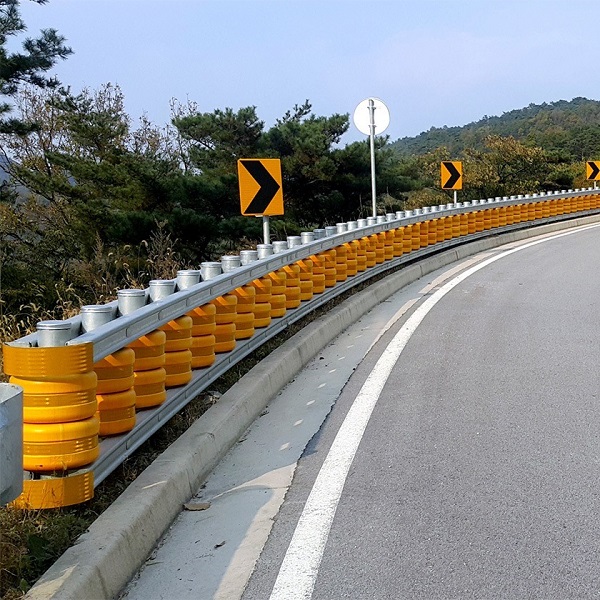 "Roller" safety barrier. Image credit: Unknown
"Roller" safety barrier. Image credit: Unknown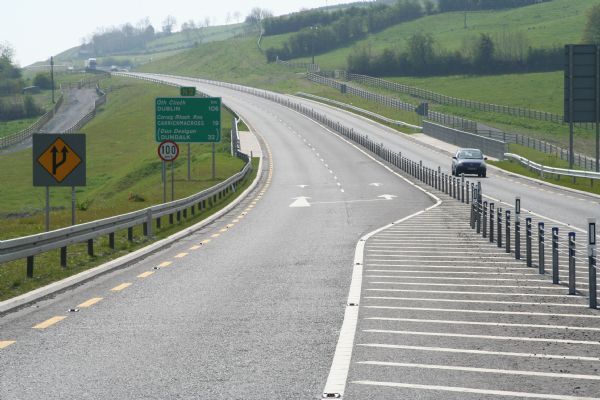 A divided road in Ireland with 2+1 lane configuration and wire-rope median barrier. Image credit: EuroRAP
A divided road in Ireland with 2+1 lane configuration and wire-rope median barrier. Image credit: EuroRAP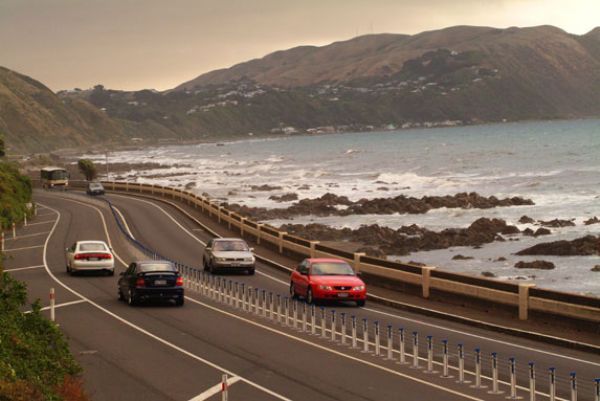 A wire-rope median safety barrier in New Zealand. Image credit: New Zealand Transport Agency
A wire-rope median safety barrier in New Zealand. Image credit: New Zealand Transport Agency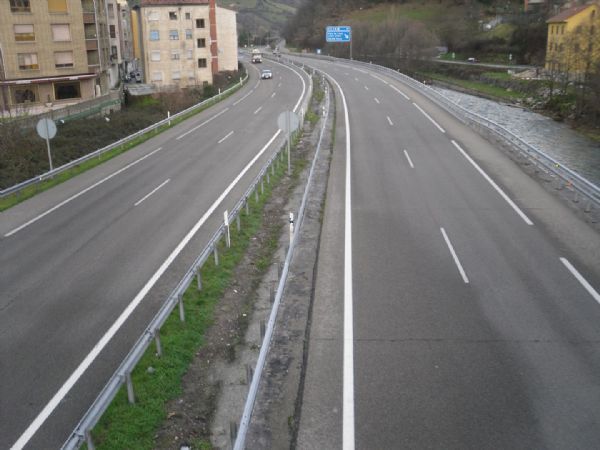 Duplication with median barrier in Asturias, Spain. Image credit: iRAP
Duplication with median barrier in Asturias, Spain. Image credit: iRAP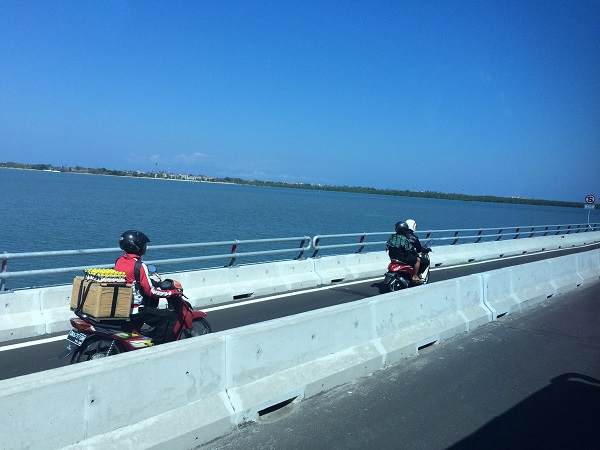 Exclusive motorcycle lane separated by concrete barrier. Image credit: Greg Smith
Exclusive motorcycle lane separated by concrete barrier. Image credit: Greg Smith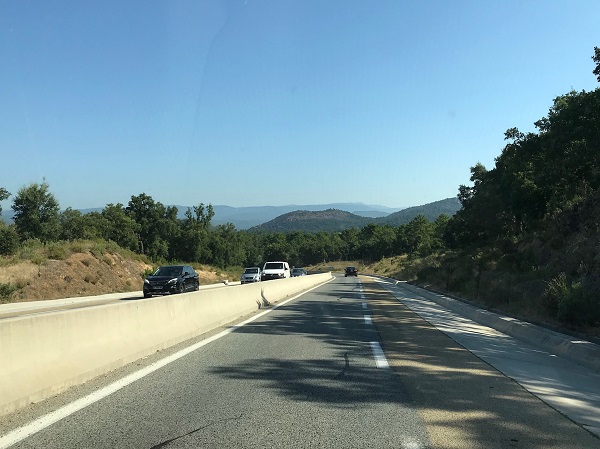 Concrete median barrier in France. Image credit: Unknown
Concrete median barrier in France. Image credit: Unknown








